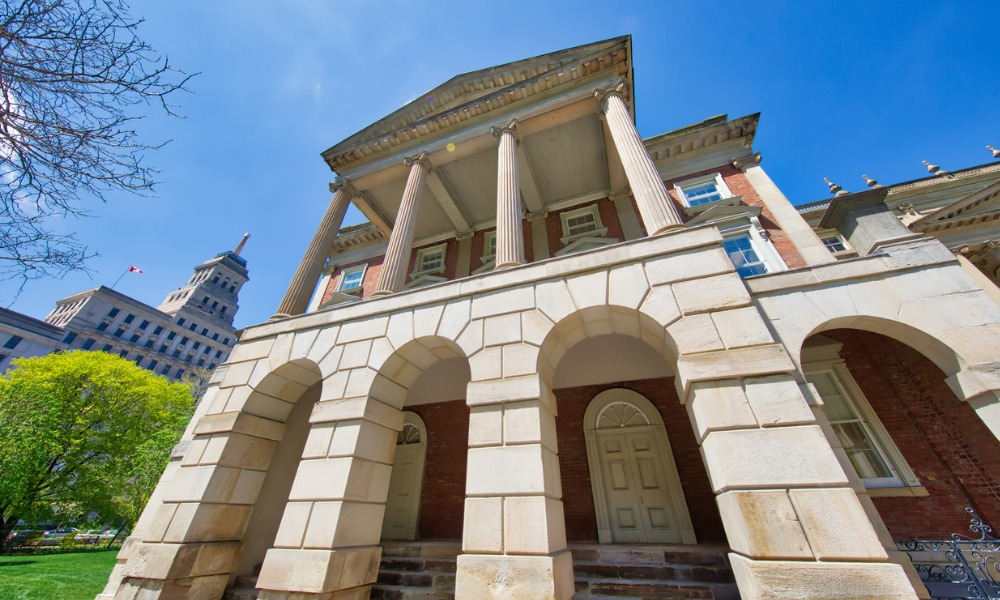Court notes treaty rights enforceable under common law, not Constitution Act, 1982

The Supreme Court of Canada has declared that the Crown breached its treaty with the Blood Tribe First Nation by allocating less reserve land than it agreed to. The court noted that treaty rights were enforceable by common law before they were acknowledged and affirmed by the Constitution Act, 1982.
In Shot Both Sides v. Canada, 2024 SCC 1, the SCC agreed with the Federal Court of Appeal that the Blood Tribe’s claim was statute-barred, rejecting the appellant’s argument that the limitation period began after the enactment of s. 35(1) of the Constitution Act, 1982. The court did, however, provide declaratory relief, finding that the Crown was in breach of the treaty as the Blood Tribe claimed. The court found the relief was warranted due to the “longevity and magnitude” of the Crown’s dishonourable conduct.
“What’s really interesting here is that the court used declarations as a way of moving the matter forward, and it seemed to see this as a way of moving the needle on reconciliation,” says Senwung Luk, a litigator who works mainly on Indigenous rights matters but was not involved in the case. “It's important to think about the practical effects of achieving a declaration.”
Most Read
The declaration tells the Crown that it breached the treaty and its obligation to the First Nation, he says, but then it is up to the Crown to decide what to do.
“The court did say that it doesn't think that reconciliation is easily achieved in the courtroom, that negotiation is preferable,” says Luk, who is a partner at Olthuis Kleer Townshend LLP.
But he adds that when cases like these end up in court, it is typically because negotiations have failed. He says it is never an Indigenous nation’s first choice to pursue their rights in court, and they tend to do so as a last resort.
“So, I would add a note of caution to what the court is saying here about the preference for negotiation… You have to remain attentive to why negotiations haven't worked in particular cases and the systemic barriers to Indigenous communities in vindicating their rights through negotiation.”
In September 1877, the Crown and the Blackfoot Confederacy signed Treaty #7, establishing Blood Tribe Reserve #148, the largest reserve in Canada. The treaty’s last entitlement provisions promised one square mile for each family of five, or in that proportion for larger and smaller families, but the Blood Tribe claims that the reserve's size fell short of this formula.
In 1980, the Blood Tribe brought an action in the Federal Court. They said the Crown breached its fiduciary duty and alleged fraudulent concealment and negligence. The Blood Tribe sought a declaration and damages for breach of contract.
The Federal Court concluded that the Crown miscalculated the size of the reserve and that its conduct during the reserve’s creation was unconscionable. The trial judge found that the clock began ticking on the limitation period in 1982, the enactment of the s. 35(1) of the Constitution Act, 1982, which created a new cause of action for treaty breaches. The Federal Court of Appeal disagreed, finding that the Blood Tribe’s claim was statute barred because s. 35(1) did not create new treaty rights and a remedy was available before 1982.
Justice Michelle O'Bonsawin, who wrote the reasons for the unanimous court, said that treaty rights come from the treaty, not s. 35(1), and upon execution, the treaty gives rise to actionable duties under the common law. Therefore, the Blood Tribe’s claim was actionable prior to 1982 and is statute-barred because of the six-year limitation period, she said.
O'Bonsawin found that the “longevity and magnitude of the Crown’s dishonourable conduct” called for declaratory relief, which would clarify the treaty land entitlement, identify the dishonourable conduct, assist reconciliation, and help restore the Crown's honour.
When considering the court’s finding that treaty rights were enforceable upon execution of the treaty, Luk says it is important to keep in mind that it was illegal for First Nations to hire lawyers without the permission of the Minister of Indian Affairs until 1951.
“It's fine and good to say that on paper,” but he adds that Indigenous communities have been deprived of access to legal counsel for a long time and there remain resource constraints for pursuing these claims.
While s. 35(1)’s coming into force “did not impact the enforceability of treaties at common law,” it gives existing Aboriginal and treaty rights “constitutional status” and prevents them from “abrogation by federal, provincial, or territorial law,” said O'Bonsawin. The section entrenched the Crown’s obligation to respect treaty rights, but it did not create those rights.
She said that declaratory relief “takes on a unique tenor” in Aboriginal and treaty rights because courts can use it to “promote reconciliation to restore the nation‑to‑nation relationship.” Declaratory relief’s “non-coercive nature” can help the dispute’s parties resolve the issues “without an excessively hostile or adversarial approach,” which is especially appropriate given the “non‑adversarial, trust‑like relationship Canadian governments are supposed to have with Indigenous people.”
O'Bonsawin said that declaratory relief can also provide clarity on the Indigenous parties’ legal rights, the Crown’s duties, and the conduct required to uphold the honour of the Crown. They serve a corrective function, she said, by showing the Crown has violated rights which may spur reconciliation efforts to address the wrongs suffered.









